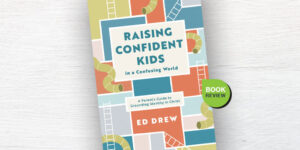
… about the proposed ‘conversion therapy’ legislation in NSW.
In November, the NSW State Parliament is set to consider two bills prohibiting ‘change or suppression’ practices relating to sexual orientation and gender identity.
The precise wording of the bill to be proposed by the NSW Government has not been made public. However, a Consultation Paper was recently released by a working group from the Department of Communities and Justice and the Department of Health. Contrary to the pre-election commitments made by the NSW Labor Party, this proposal is largely based on the ‘change or suppression’ legislation that is already in force in the state of Victoria.
As a Christian mother, I find the proposed legislation deeply concerning. It undermines my right to talk about the Christian view of sex and gender with my own children. It sees the Christian sexual ethics I want to pass on to them as inherently ‘harmful’, rather than something that is good and life-giving.
That’s why I am going to write to my local MP this week.
What’s the problem in Victoria?
The Victorian laws, which have been helpfully summarised by Freedom for Faith, go far beyond banning coercive and genuinely harmful ‘gay conversion’ practices. They consider anything that is not full, unqualified, immediate support for a person’s sexual desires to be ‘suppression’ of their sexual orientation or gender identity. The context doesn’t matter. The proposed legislation would apply to conversations between family members, children and parents and married couples. Praying a prayer where we ask God to help someone manage their sexual desires would be a criminal offence.
Alarmingly, the Victorian legislation applies even if a person consents to this kind of conversation or prayer. The Victorian legislation also treats sexual orientation and gender identity the same way, even though they are two very different issues.
Basically, in Victoria, it is now illegal to encourage anyone to exercise self-control over their sexual urges. Such encouragement, in any form, is considered to cause ‘serious and ongoing harm’.
How does this affect parents and children?
If a Victorian child expresses a feeling of gender incongruence—discomfort with the male or female body they were born with—then the only legal response from parents and clinicians is one of unquestioning affirmation of their chosen gender identity.
Victorian parents are therefore understandably frightened that if they question their child’s sudden claim to be ‘trans’, that child might be removed from their care. Some Victorian clinicians are refusing to treat children with gender dysphoria because they are frightened about falling foul of the law if they take a wholistic approach, such as ‘watchful waiting’ (see below).
And just to close up any loopholes, it also illegal to take a Victorian child out of the state to receive any treatment that is not fully ‘affirming’ of the child’s chosen gender identity.
Why is ‘affirmation only’ problematic?
To gain a more detailed understanding of gender dysphoria, I recommend the book The Gender Revolution: a Biblical, Biological and Compassionate Response by Patricia Weerakoon with Robert Smith and Kamal Weerakoon.
Victoria’s ‘affirmation only’ approach to gender dysphoria is not supported by science. Firstly, study after study has shown that when parents and clinicians practise an approach of ‘watchful waiting’—that is, supporting a child without encouraging transition—around 85% of children grow out of their gender dysphoria by the time they are adults. Many of them end up identifying as homosexual.
However, if children are ‘affirmed’ in their gender dysphoria—if they are encouraged to change their name, pronouns and appearance—then almost 100% of them will proceed down a medicalised pathway towards puberty blockers, cross-sex hormones and potentially even surgery (The Gender Revolution, Chapter 6, Location 1674–83). This sets children up for a lifetime of dependence on experimental medical interventions and the consequent health risks (many of which are still unknown).
The ‘affirmation’ pathway is not harmless …
Keep reading this article (and my letter to my local MP) over at Growing Faith, a Christian online magazine for parents. Find out more about Growing Faith and subscribe to our monthly e-newsletter here.


